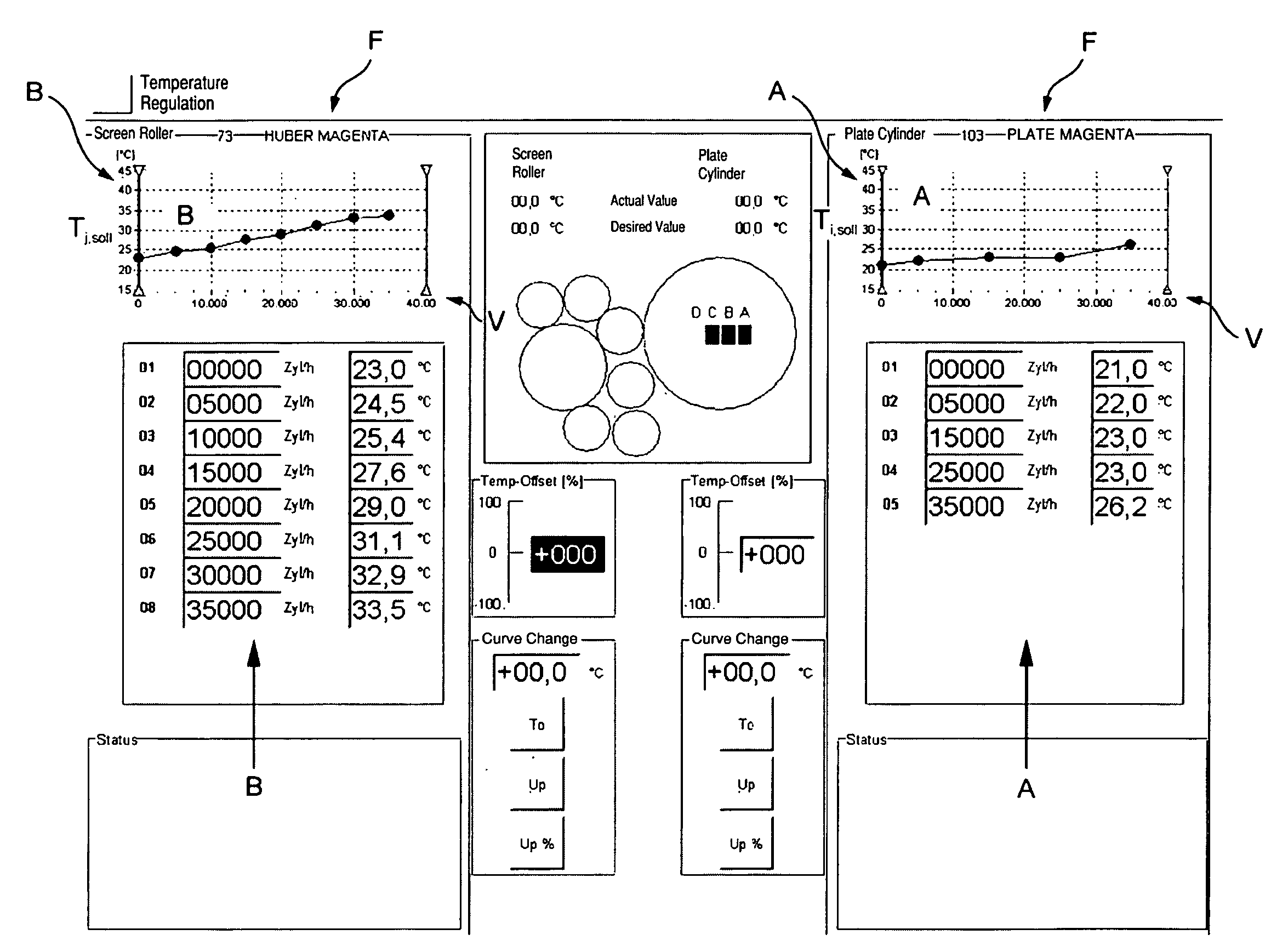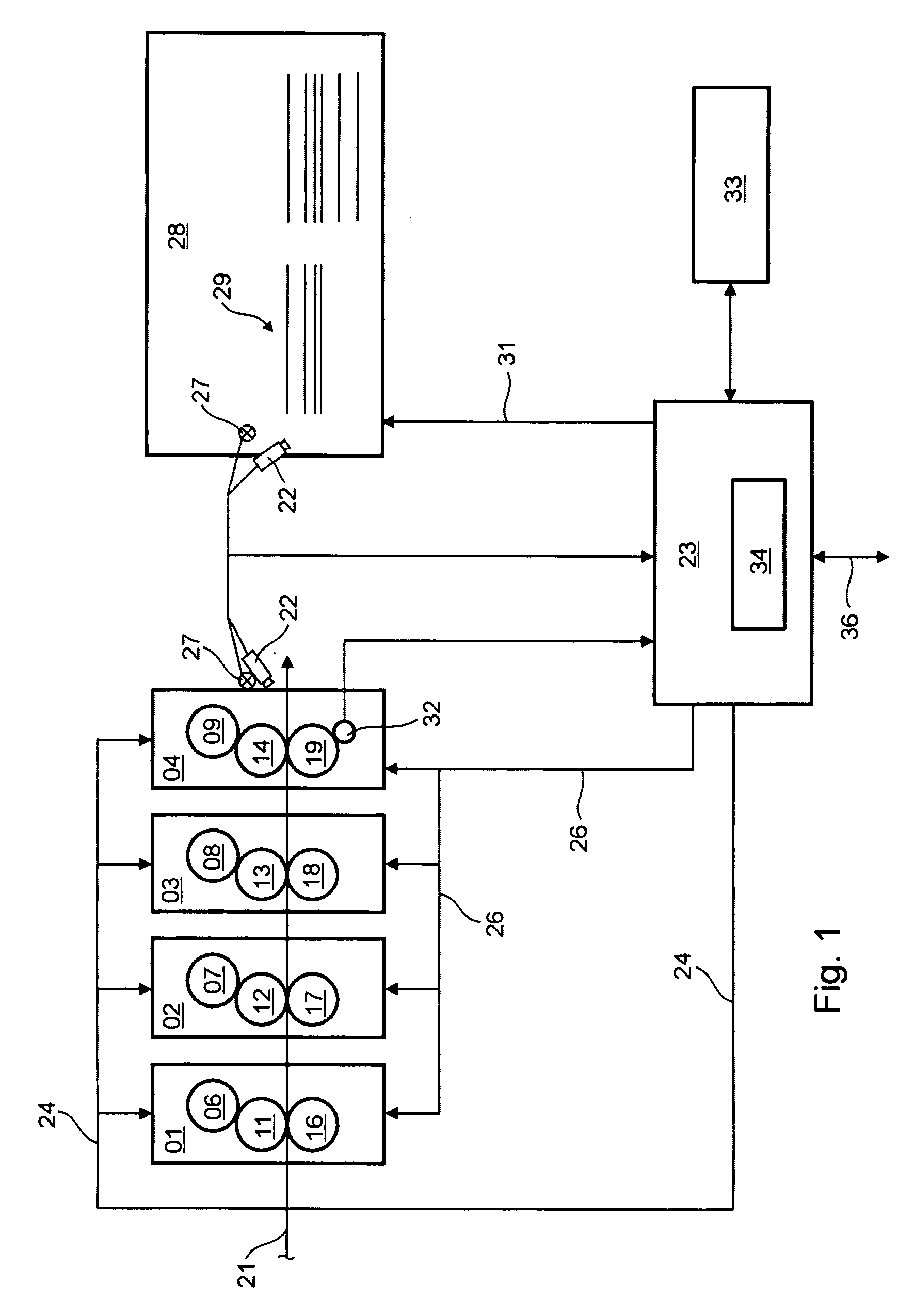Method for Adjusting the Transfer of Printing Ink
a technology of printing ink and transfer rate, which is applied in the direction of office printing, printing, rotary presses, etc., to achieve the effects of reducing the capacity of screen rollers, preventing waste, and increasing the production speed of printing presses
- Summary
- Abstract
- Description
- Claims
- Application Information
AI Technical Summary
Benefits of technology
Problems solved by technology
Method used
Image
Examples
first embodiment
[0121] In the first embodiment, as shown in FIG. 12 a direct use of the warm return flow, for example of a maximum temperature of 35 to 40° C., and in particular, of apprx. 38° C., takes place from the circuit K3 for temperature-regulating the drive mechanisms M, for example by the use of a fluid-gas heat exchanger 119, such as, for example, a heat exchanger heating register, for direct heating of the air during winter operations.
second embodiment
[0122] In the second embodiment, as depicted in FIG. 13 a use of the temperature-regulating medium from the circuit K2 takes place as a heat source for a heat pump 121. By the use of the heat pump 121, it is possible to reach a higher temperature level in a reservoir 122, for example up to 55° C., than in the embodiment in accordance with FIG. 12, but an additional structural and energy layout becomes necessary.
[0123] The two regeneration concepts represented in FIGS. 12 and 13 can also make use of the respectively other source, such as K2 or K3 for example, in FIG. 12, of the return flow from K2, and in FIG. 13 of the return flow from K3. The systems can also have recourse to the heat flow 63, as may be seen in connection with FIG. 5 as the source.
PUM
 Login to View More
Login to View More Abstract
Description
Claims
Application Information
 Login to View More
Login to View More - R&D
- Intellectual Property
- Life Sciences
- Materials
- Tech Scout
- Unparalleled Data Quality
- Higher Quality Content
- 60% Fewer Hallucinations
Browse by: Latest US Patents, China's latest patents, Technical Efficacy Thesaurus, Application Domain, Technology Topic, Popular Technical Reports.
© 2025 PatSnap. All rights reserved.Legal|Privacy policy|Modern Slavery Act Transparency Statement|Sitemap|About US| Contact US: help@patsnap.com



